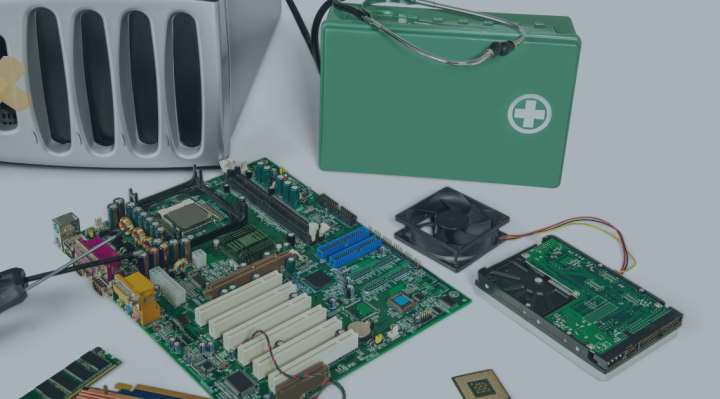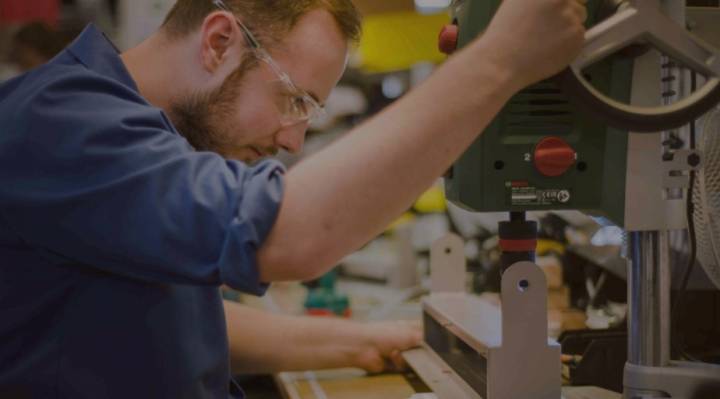Companies that provide the electro-mechanical assembly services deal with extremely complex tasks that require specialized skills, precision, and accuracy in operation. After all, in the EMS field, we have procurement, engineering operations, production operations, and, naturally, numerous testing procedures. In such a specialized industry, everything has to run like clockwork. This begs the question–what are the key factors in electro-mechanical assembly? What can you do to ensure its proper functioning and development?
In this article, we have indicated six facets of successful electro-mechanical assembly. Each one of them has a significant influence on the way your company works. Let’s cut straight to the chase:
BOM & Revision management in electro-mechanical assemblies
Proper implementation of Bill Of Materials and revision management in electro-mechanical assemblies is one of the essential factors. BOM is part of the product’s specification and contains a list of raw materials, subassemblies, materials, parts, and quantities of each final element needed for production. BOM is necessary both when you make all materials and assemblies internally and when you outsource them to an external company.
Why is it so important? First of all, BOM allows the procurement specialist to identify reliable sources of materials and materials. It’s a, so to say, a base for appraisal and execution. Thanks to the list of materials, you can assess which of the vendors has the most favourable prices and conduct the procurement process.
BOM also plays a vital role in production planning. Thanks to it, when if refers to electronics, one can locate alternative distributors when selected materials contained in the BOM are unavailable. After approval from the customer’s side, alternative materials can be used. Production can run without unnecessary delays caused by waiting for materials.
The implementation of BOM in electro-mechanical assemblies ensures that the right amount of materials and consumables necessary for the implementation of the planned production is secured. It allows maintaining the lowest possible level of inventory, thus helps in optimizing costs.
3D CAM Modelling & Mechanical engineering skills
Providers of the electro-mechanical assembly services cannot do without CAM. Thanks to this solution, it is possible to shorten the working time, reduce waste, and eliminate the risk of collision.
What benefits can CAM bring in the field of electromechanical assembly?
1. The possibility of presenting a product before its actual implementation
Thanks to the possibilities offered by the 3D modeling programs, you can present the finished product (prototype) to the world before its production begins. Many of the currently available software solutions allow you to simulate how the ready-made project or materials within this product will look like. The presentation of the prototype ensures that materials and the product as a hole meet the design criteria and specified norms.
2. Avoiding mistakes at the production stage
Detecting an error during the production stage generates unnecessary costs. Relying on unverified documentation during assembly can be unreliable. Potential problems cannot always be seen. Appropriate software eliminates the risk of potential problems like, e.g. in terms of production tolerance of elements before production.
3. Exact cost estimate
Only accurate documentation and appropriate software allow the material suppliers to prepare an accurate valuation of materials for electromechanical assembly. Sketches and plans alone may not be sufficient to estimate the total purchase cost of non-electronics materials.
However, CAM alone is not enough. To achieve the expected results, you also need technically trained engineers to operate it. The software has its limitations. It may be able to indicate individual errors, such as the incorrect connection of panels, but will not indicate the consequences that follow. To be able to prevent the domino effect caused by several conflicting parts, you need engineering knowledge and experience. In conjunction with professional software, it guarantees high quality and correctness.
Sourcing capabilities
It is important for the companies providing electro-mechanical assembly to find the right balance between costs and unit prices, as well as short delivery times. All supplies of electronic, mechanical, and PCB materials should come from a supplier best suited to the profile of technical capabilities . Sourcing, in combination with the management of alternative materials, allows you to perform services on time, professionally and qualitatively.
The main task of the purchasing department in the field of electromechanical assembly is to combine the clients’ guidelines indicated in the BOM with the quality of services and goods offered by suppliers.
Only with full control over the deliveries of elements you can be sure about the final result – high quality and timeliness.
Material Inspection and Quality Control Processes
When it comes to the assembly of electro-mechanical devices, very often the vast majority of materials are purchased from external suppliers. Carrying out material inspections is extremely important even if you acquire a material from a trusted company. What is the most important thing to remember about inspections?
- Don't take the supplier for granted. You always need to perform out of box inspection (outgoing quality control) every time in accordance with the AQL tables. This standard is recognized by most companies and we are sure that nobody will question it.
- You should perform a supplier audit from time to time. It is an effective way to check the quality of a particular supplier of dedicated materials. That way, the potential error does not become your company's fault and we can ensure the vendor is making progress.
- Material inspection is a standard in reliable contract electronics manufacturing facilities. It is worth remembering that in accordance with lean principles, it’s the supplier who should verify the quality of the delivered elements.
Performing electro-mechanical assembly based on inadequate quality may result in the need to withdraw the whole, ready device and remake it.
There is a risk of production delay and additional costs. Detecting a defect of a certain part at the production stage is also disadvantageous because it causes adverse line downtime. Therefore, after purchasing the parts, make sure that they fully comply with the specifications. The best for the need of material inspections is to allocate a special control room in which you will find all necessary objects for measurements. Any problems found at the material level will allow you to react quickly and avoid unnecessary complications at the assembly stage.
We recommend that you perform material inspections of a randomly selected 10% of the received material.
Test capabilities in electro-mechanical assemblies
Electro-mechanical assembly is an extremely complicated process, which is why tests are indispensable. By incorporating the testing phase into the production process, you can verify the product quality and increase its manufacturing efficiency.
Tests ensure that production proceeds as planned and the products manufactured meet specific requirements.
The use of measurement data collected during tests increases the efficiency of the production process and contributes to product improvement.
Additional difficulties for complicated assembly of electro-mechanical devices are introduced by connecting movable elements with fixed parts. Imagine a situation in which a moving element is incorrectly mounted on a stationary metal plate. Even if this displacement has only a few millimetres, it can affect the functioning of the entire device. To rule out such situations, checks as part of the process should take place at every stage of production.
Manufacturing space and skilled workforce
Manufacturing space is an important topic, and misuse of space or tools, poor material management, and generate inadequate material losses is a very common problem for many contract electronics manufacturing companies. Electro-mechanical assemblies require great precision and high manual skills from the installer. Precise assembly means less probability of damage to costly parts and a guarantee of safety. However, proper manufacturing space is needed for this. A big challenge is a large-scale assembly, which, first of all, requires a properly planned space.
Organized manufacturing space allows you to order and use the optimal amount of raw materials, parts, materials, and subassemblies, which improves your company's flows and protects against unnecessary freezing of capital.







